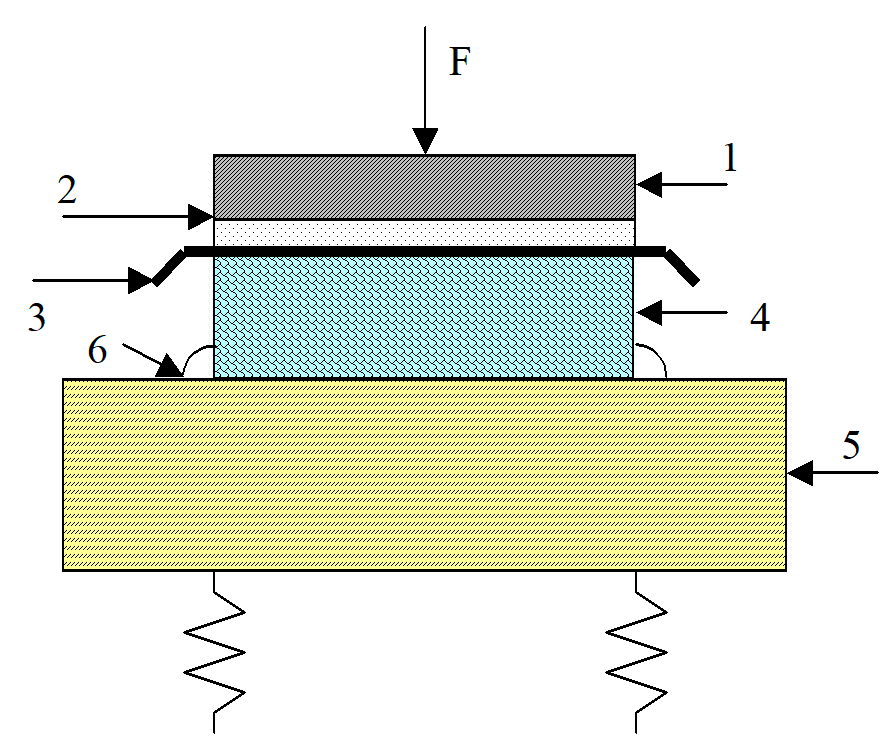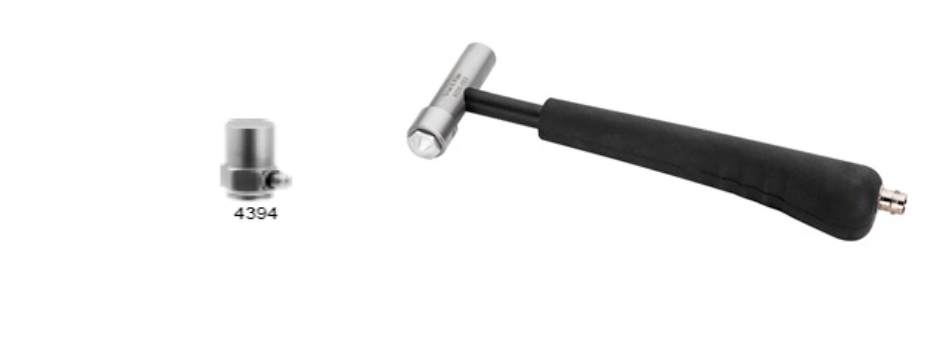Dynamic stiffness
Dynamic stiffness is related to the acoustic insulation properties also exhibited by thermal insulation products, in particular the materials used under floating floors in dwellings to reduce the impact noise. According to the applicable standard, UNE-EN 29052-1:1994 (ISO 9052-1:1989), the aim is to determine the frequency of the fundamental vertical vibration (resonance frequency) of a mass-spring system, in which the mass is the load plate, and the spring is the sample of the insulating material. To carry out the test, an assembly is made as shown in the following figure:

The resonance frequency fr can be determined using sinusoidal signals, white noise or pulses. In our case, we have opted for the generation of pulses (ISO 7626-5:) by means of an impact hammer, which will be the force transducer and with the use of an accelerometer as a movement transducer we will be able to determine the energy level (resonance frequency of the system) from which the material “likes to move” (absorbing energy).

In this way we can determine the dynamic stiffness of the material according to the equation:

where:
S´t: Dynamic stiffness of test sample ( N/m3)
m´t: Mass per surface unit (Kg/m2)
fr: Resonance frequency of the system (Hz)
Thus, the lower the dynamic stiffness of the material, the lower the resonance frequency of the system and the higher the acoustic insulating power of the material. This is because below the resonance frequency, the material behaves like a rigid solid, i.e. it allows all the energy it receives to pass through it, so it has no damping effect in the event of receiving an impact (such as a heel or marbles hitting the ground) and what is more, this energy can be transmitted to other parts of the building structure causing vibrations or increasing this noise. From the resonance frequency onwards, the material absorbs all or part of the energy it receives and hence its capacity to absorb the impacts it receives. This characteristic is mainly determined on EPS and MW products.

